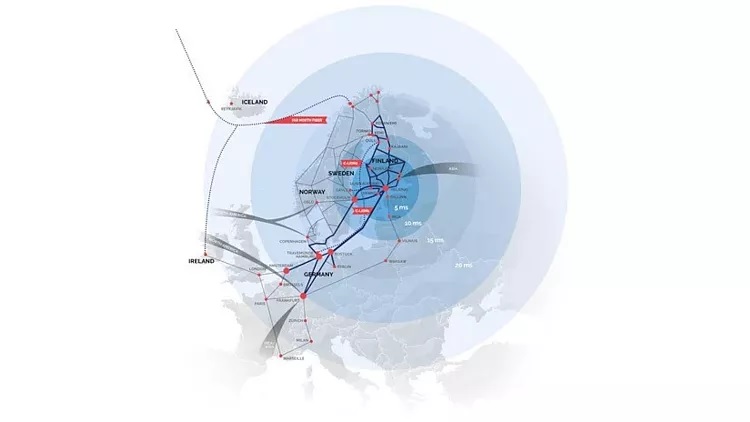Why Securing Critical Infrastructure Is Vital in a Volatile World
A Joint Response to Critical Infrastructure Damage
Finland and Germany are investigating a severed undersea data cable in the Baltic Sea, sparking concerns over potential sabotage. This damage, discovered on the C-Lion1 cable connecting Helsinki to Rostock, underscores rising threats to European security. In a joint statement, both nations expressed alarm, citing “hybrid warfare by malicious actors” as a growing concern.
The timing is critical, as Europe grapples with Russia’s aggression in Ukraine and other geopolitical tensions. Finland’s Cinia, which operates the cable, assured the public that backup lines maintain data flows. However, the severance raises questions about the resilience of Europe’s digital infrastructure.

Map of Finnish state-controlled data services provider Cinia’s cable network.Cinia
The Broader Context of Hybrid Warfare
This is not an isolated incident. Another cable between Lithuania and Sweden was cut just days earlier. Both events highlight vulnerabilities in undersea communication networks, which are crucial for international data and telecommunications.
European security experts are increasingly worried about hybrid warfare tactics. Such actions aim to destabilize nations by targeting infrastructure without direct military confrontation. Suspicion immediately falls on intentional acts because of the strategic importance of these cables.
Strategic Implications for Europe
The C-Lion1 cable is Finland’s only direct data link to Central Europe. Though redundancy measures are in place, the disruption highlights the potential chaos if multiple cables were compromised simultaneously. A similar scenario in regions like the Red Sea could cripple global communications, affecting economies and essential services worldwide.
These incidents also underline the geographical proximity of critical infrastructure to other vulnerable assets. For instance, the damaged Baltic Sea cable lies near the Nord Stream gas pipelines, which have already been a focus of international tension.
Could Starlink Be the Hero?
As undersea cables face rising threats, alternative solutions like Elon Musk’s Starlink satellite network gain relevance. Starlink’s decentralized infrastructure offers a backup for critical communications, reducing reliance on vulnerable physical networks. However, satellite systems also face their own cybersecurity risks, requiring robust defense mechanisms.
A Call for Proactive Measures
Europe must prioritize the protection of critical infrastructure to prevent future disruptions. This includes enhancing physical security, diversifying communication pathways, and investing in cutting-edge technologies like satellite networks. Public awareness of these threats is essential to ensure resilience in a world where infrastructure is increasingly a target.
The investigation into these incidents is ongoing, but one thing is clear: the stakes for securing Europe’s digital lifelines have never been higher.
Our Visitor






 Users Today : 39
Users Today : 39



